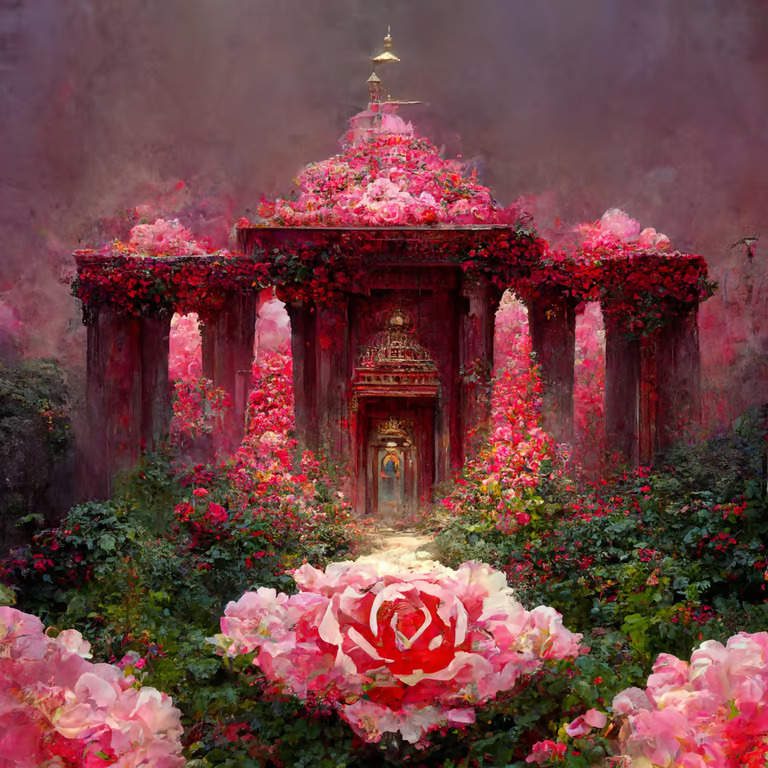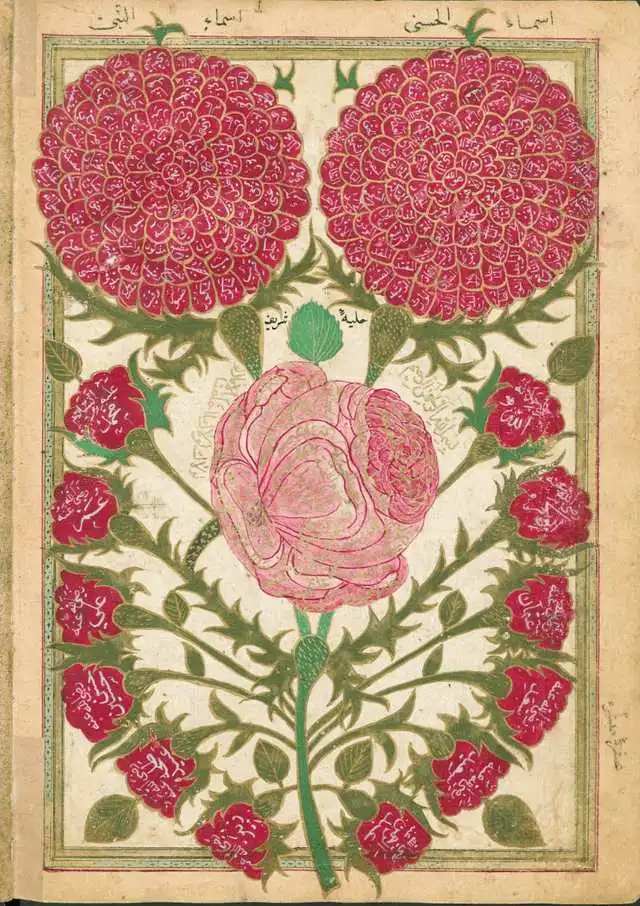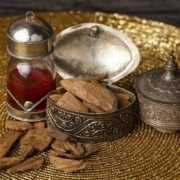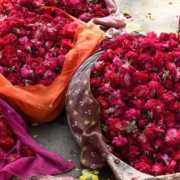The Perfume of Sanctity

Let us embark on a journey to explore the depth and intricacies of aromas and our sense of smell. These attributes find expression in the apparent paradoxes of scents. They are detectable, yet intangible and most frequently unseen, and they possess the ability to represent and even facilitate communication with ethereal entities, all while being fleeting.
Aromas have the power to saturate both physical spaces and human individuals. In this way, scents and fragrances exist at the crossroads of various facets of human existence: the natural, the physiological, the societal, the imaginative, and the spiritual realms.
The Perfume of Sanctity is a metaphorical or symbolic expression often used in religious and spiritual contexts. It refers to the concept that spiritually advanced or enlightened individuals emit a metaphorical fragrance or aura of holiness, virtue, and divine presence. This phrase is not necessarily used in a literal sense; instead, it conveys the idea that certain individuals possess qualities and virtues that are pleasing and uplifting, akin to a pleasant fragrance.
In many religious traditions, saints are regarded as exemplars of faith, virtue, and devotion. They are believed to have cultivated a deep connection with the divine and to have embodied qualities such as love, compassion, humility, and selflessness. The idea of their “perfume” signifies the positive impact their lives and teachings have on others, inspiring them to lead more virtuous and meaningful lives.
The concept of the perfume of the saints emphasizes the intangible yet powerful influence that spiritually evolved individuals can have on the people and world around them. It’s a way of describing their ability to uplift, inspire, and guide others toward a greater understanding of spirituality and a closer relationship with the Divine.
Here are some additional aspects and insights related to the concept of “The Perfume of Sanctity”:
- Symbolism of Fragrance: The use of fragrance as a symbol of sanctity can be found in various religious texts and teachings. In many traditions, pleasant aromas are associated with purity, beauty, and divine presence. The idea of spiritual figures emitting a fragrance is a way to convey their elevated spiritual state and the impact they have on those around them.
- Sign of Spiritual Progress: The perception of a saintly or holy person’s fragrance can be seen as a sign of their advanced spiritual progress. It is believed that their deep connection with the divine and their embodiment of virtues result in a kind of spiritual radiance that is felt by those who are sensitive to such experiences.
- Mystical and Miraculous Experiences: Encountering the perfume of sanctity is often considered a mystical or miraculous experience. People who report smelling the fragrance of a saint even after their passing may view this as a form of divine communication or a manifestation of the saint’s continued intercession on behalf of believers.
- Influence on Devotion and Faith: The concept of the perfume of sanctity can inspire increased devotion and faith in the followers of these spiritual figures. The idea that a saint’s presence can be felt or sensed, even after death, can provide comfort and reassurance to those seeking guidance and connection with the divine.
- Cultural and Regional Variations: The experiences associated with the perfume of sanctity can vary across different cultures and religious traditions. While the fragrance of roses is a common association, other scents, such as violet, sandalwood, or incense, might also be reported in different contexts.
- Subjectivity and Skepticism: These experiences are inherently subjective and not easily proven or explained by scientific methods. As a result, they can evoke skepticism among those who approach such matters from a rational or empirical standpoint.
- Stories and Narratives: Many believers who visit shrines, tombs, or places associated with revered saints tell stories of smelling the perfume of sanctity. These stories often become part of the spiritual lore of a particular tradition and can hold deep meaning for the faithful.
The Odor of Sanctity in Christianity
There are many stories and accounts from various religious traditions and cultures where individuals claim to have experienced the scent or fragrance associated with a saint, even after the saint’s death. These experiences are often considered mystical or miraculous and are seen as a sign of the continued presence or intercession of the saint in the lives of believers. Here are a few examples:
- St. Therese of Lisieux: St. Therese, also known as “The Little Flower,” is a popular Catholic saint known for her writings on spirituality. Many believers have smelled roses after praying to her or asking for her intercession. Roses are often associated with her because she promises to send down a shower of roses from heaven.
- Padre Pio: St. Padre Pio was an Italian Capuchin friar known for his stigmata and his holiness reputation. Numerous people reported smelling the scent of flowers, perfume, or other pleasant aromas in his presence, especially after his death.
- St. Teresa of Avila: St. Teresa of Avila was a Spanish mystic and Carmelite nun. There are accounts of people experiencing the scent of roses or other fragrances during moments of prayer and connection with her teachings.
- St. John Bosco: An Italian priest and educator, St. John Bosco is said to have emitted a sweet fragrance after his death. Many students and followers have smelled this fragrance in his presence, which was attributed to his sanctity.
It’s important to note that these experiences are subjective and rely on personal accounts. They are often seen as signs of divine presence, intercession, or blessings. These accounts highlight the diverse ways people express their spiritual experiences and connections with figures they consider holy or enlightened.
The Odor of Sanctity in Islam

Names of God and names of Muhammad
There are numerous accounts and reports from devotees and visitors to the shrines of Muslim Sufi saints declaring to have experienced the scent of roses or other pleasant fragrances. These experiences are often seen as signs of the saint’s spiritual presence, blessings, and intercession. Such occurrences are consistent with the mystical and transcendent nature of Sufi practices and beliefs.
Experiencing fragrances or scents associated with Sufi saints is not unique to any specific region or time. Devotees from various parts of the world have reported these experiences at different Sufi shrines. Here are a few examples:
-
Abdul-Qadir Gilani (Ghous-ul-Azam): The 11th-century Sufi saint Abdul-Qadir Gilani, known as Ghous-ul-Azam, is associated with many miracles. Many said that his tomb in Baghdad emits a sweet fragrance, often described as the scent of roses, which believers attribute to his continued presence and blessings.
-
Al-Maqsur al-Qaysari: Al-Maqsur al-Qaysari was a 9th-century Sufi mystic and disciple of Junayd Baghdadi. It is reported that after his death, a beautiful fragrance filled the room where he had passed away. This experience was seen as a sign of his sanctity and the divine favor upon him.
-
Baba Fariduddin Ganjshakar: Baba Farid, a 12th-century Sufi saint from the Chishti order in India, is often associated with miracles and blessings. His tomb in Pakpattan, Pakistan, emits a fragrance that devotees perceive as a sign of his spiritual presence and intercession.
-
Sidi Bou Said: A 13th-century Sufi saint from Tunisia, Sidi Bou Said, is said to have emitted a sweet fragrance after his death. The fragrance was so intense that it spread throughout the region, and the town of Sidi Bou Said is named after him.
-
Hazrat Nizamuddin Auliya: A 13th-century Sufi saint in India, Hazrat Nizamuddin Auliya is associated with various miracles. It is said that the fragrance of sandalwood would often emanate from his tomb in Delhi, signifying his continued presence and blessings.
-
Sultan Valad: Sultan Valad, the son of Rumi, is believed to have emitted a sweet fragrance after his death. This event is often cited as evidence of his spiritual stature and close connection to his father’s teachings.
-
Shah Inayat Shaheed: A Sufi saint from Pakistan, Shah Inayat Shaheed is said to have emitted a pleasant fragrance after his execution. Many devotees visit his tomb in Lahore, believing in his spiritual power and blessings.
-
Ajmer Sharif, India (Shrine of Khwaja Moinuddin Chishti): The shrine of Khwaja Moinuddin Chishti, a renowned Sufi saint, is in Ajmer, India. Many visitors have said they have smelled the fragrance of roses or attar (perfume) at this shrine, which is considered a sign of the saint’s blessings and spiritual presence.
-
Data Darbar, Pakistan (Shrine of Ali Hajveri): The shrine of Ali Hajveri, also known as Data Ganj Bakhsh, is located in Lahore, Pakistan. It is a popular Sufi shrine where visitors have reported experiencing the scent of roses and other pleasant fragrances.
-
Rumi’s Tomb, Turkey (Shrine of Rumi): The tomb of the famous Sufi poet and mystic Rumi, located in Konya, Turkey, is a place where visitors often report feeling a strong sense of spiritual presence. Many people said to have experienced the scent of roses or other floral fragrances while visiting the shrine.
These narratives represent merely a sample of the numerous tales in Sufi literature and oral traditions. They embody the profound devotion and faith that adherents hold towards these Sufi saints’ sanctity and enduring presence. It’s essential to recognize that these stories are handed down through generations, often with variations in detail. Nonetheless, they all enrich the intricate tapestry of Sufi spirituality and its link to the transcendent realm.
These experiences of smelling roses or other fragrances are deeply meaningful to believers and are often considered a direct connection to the spiritual realm and the saint’s blessings. While these occurrences are subjective and difficult to verify scientifically, they hold great significance within the context of Sufi spirituality and the faith of those who have encountered them.
Ultimately, “The Perfume of Sanctity” highlights the idea that spiritual purity and closeness to the divine can transcend the physical realm and be sensed on a spiritual level. It’s a poetic and symbolic way of expressing the profound impact that holy individuals have on the lives and hearts of those who revere them.
























Excellent write-up, brother Jamaluddin. BTW, I want you to know that my Shaikh is the disciples’ successor of Khaja Khaja Moinuddin Chisti, and the Tarika is known as Chistia Tarika.